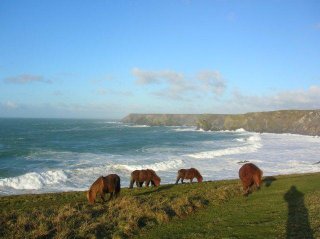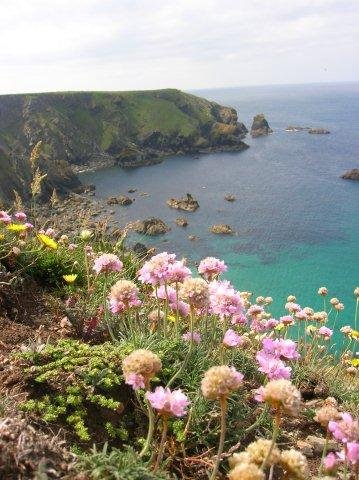 The Lizard peninsula more than warrants a visit at any time of year. March or April is the best time to see the early species such as Early Meadow Grass, Three-lobed Water
The Lizard peninsula more than warrants a visit at any time of year. March or April is the best time to see the early species such as Early Meadow Grass, Three-lobed Water
Crowfoot and the Land Quillwort. By mid-May the widespread colourful cliff flowers are at their best, though many of the rarer clovers and other annuals peak during the second half of May and the second half of June.
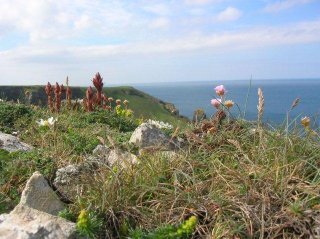 The heathland season commences in June, with trackway species such as Pigmy Rush and many early heathland species ( orchids, Pale Heath Violet, Thyme Broomrape etc) in full flower. The heathers themselves provide the grand finale to the flowering season: the many pastel-coloured Cornish Heath plus its allies reach their perfection in August and September.
The heathland season commences in June, with trackway species such as Pigmy Rush and many early heathland species ( orchids, Pale Heath Violet, Thyme Broomrape etc) in full flower. The heathers themselves provide the grand finale to the flowering season: the many pastel-coloured Cornish Heath plus its allies reach their perfection in August and September.
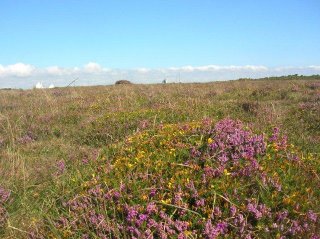 As for specific sites, it is difficult to pinpoint individual locations in an area so rich in good habitat, but the following promise a good reward:
As for specific sites, it is difficult to pinpoint individual locations in an area so rich in good habitat, but the following promise a good reward:
Coastal Cliffs
The whole coast of The Lizard, from Loe Pool in the west to Lowland Point at Coverack in the east, is good. The cliffs between Mullion Cove and Kynance, and between Kennack Sands and Black Head, provide excellent serpentine habitat, whislt the stretch from Caerthillian to Lizard Lighthouse (on Lizard Point) is excellent schist coastline.
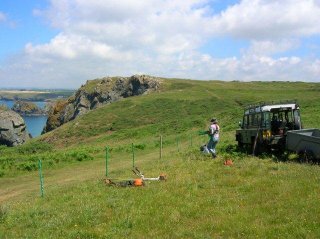 |
|
Heathlands
All heathlands are good. The two largest tracts of heathland are the Lizard-Kynance Downs and the Goonhilly-Traboe Downs. The richest areas for plants here tend to be the microhabitats such as rock outcrops, water-filled serpentine quarries, cob pits and watering pools, and trackways. The gabbro heaths of Crousa Downs and Main Dale lying north and north west of Coverack, provide a marked contrast to the serpentine heaths.
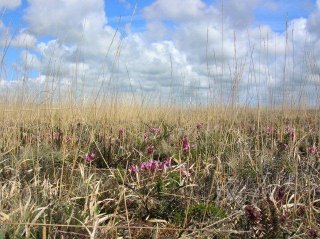
Trackways and Pools
Look at a detailed map of the area for the location of pools and trackways crossing the heathlands. Many of the best lie within the Lizard- Kynance Downs and Goonhilly-Traboe Downs complexes. The botanical interest of such microhabitats is entirely dependant on their current state. Search for ones that have been disturbed in the recent past. In the absence of disturbance they soon become overgrown and lose their special interest.
Sandy Beaches
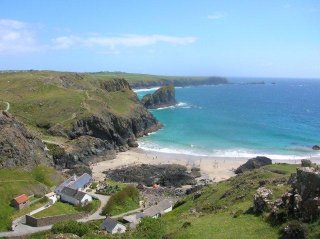 Loe Bar, Gunwaloe, Church Cove, Kennack Sands and Godrevy Cove, as well as the larger coastal lagoon of Loe Pool merit attention.
Loe Bar, Gunwaloe, Church Cove, Kennack Sands and Godrevy Cove, as well as the larger coastal lagoon of Loe Pool merit attention.
Sessile Oak Woodlands
The ancient oak woods on the steep slopes of the Helford Estuary are stunning, though access is quite limited except on National Trust sites.

